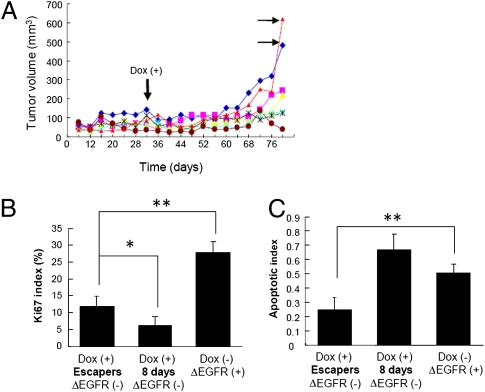Fig. 3.
Relapse of U373MG tumors after silencing of ΔEGFR expression. (A) Tumor growth of U373MG cells (3 × 106) expressing dox-regulatable ΔEGFR injected s.c. into the flanks of nude mice administered dox-containing drinking water 32 days after injection. Each line represents an individual growth curve of a tumor in a mouse from one typical experiment. Horizontal arrows indicate representative cases of ΔEGFR-independent “escaper” tumors. (B) Proliferation index as measured by counting proportion of K i-67 positive cells in escaper and ΔEGFR-dependent (with Dox for 8 days from day 32 or without Dox) tumors (mean ± SD; P < 0.0001, ANOVA; *, P < 0.05; **, P < 0.01, Tukey–Kramer HSD test). (C) Apoptotic index in same tumors as part (B), as measured by TUNEL staining (mean ± SD; P < 0.0001, ANOVA; **, P < 0.01, Tukey–Kramer HSD test).

